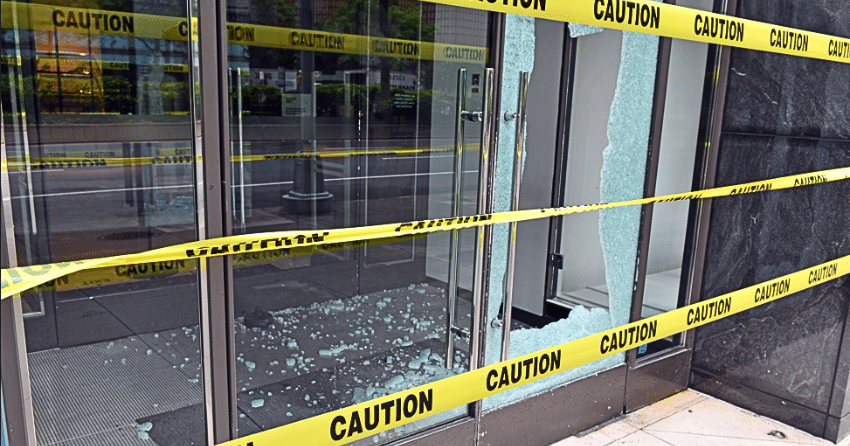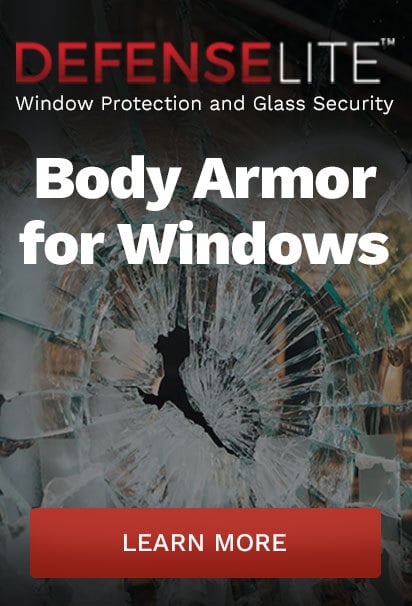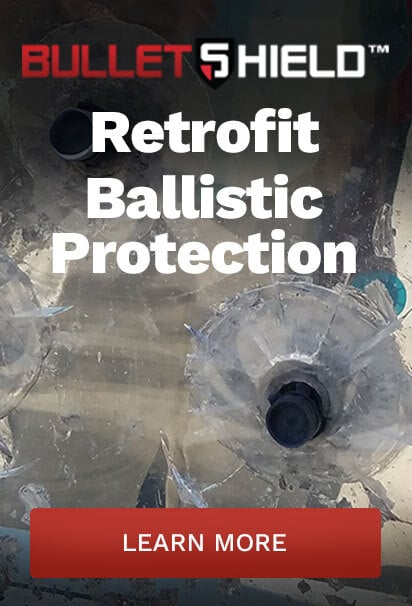The Hidden Cost of Organized Retail Crime

Exploring the Financial and Safety Impacts of ORC and the Rise of Retrofit Security Glazing Systems
Organized retail crime (ORC) isn’t just shoplifting—it’s a coordinated, costly threat to retail stores, employees, and customers. ORC involves criminal groups that steal high-value merchandise to resell online or through black markets. These thefts are bold, fast, and often violent, leaving a wake of damage behind.
According to the National Retail Federation (NRF), retail crime accounted for over $112 billion in losses in 2022, a sharp rise from previous years. While traditional shoplifting still occurs, ORC is far more aggressive. Groups work together, sometimes targeting multiple locations in one day.
More and more retailers are implementing building security options like retrofit security glazing systems to fight back. These clear, high-strength solutions offer better storefront protection and smash-and-grab prevention without changing a store’s appearance.
Understanding the Scope of Organized Retail Crime
Organized retail crime isn’t random. Groups plan attacks to hit stores during low-staff times or civil unrest. They may pose as customers, quickly grab goods, and escape in waiting vehicles. In more extreme cases, they break in overnight, targeting display cases or electronics locked behind glass.
These criminals don’t just hit storefronts, they target goods in transit too. Cargo theft is part of the same network. Trucks carrying products are hijacked or broken into. Organized crime rings track shipments, waiting for the right moment to strike. This adds another layer to retail loss prevention, as it affects inventory before it even reaches store shelves.
The scale and organization behind these crimes put retailers at a disadvantage. Traditional methods like security guards and alarms are too slow or easy to bypass. Retailers need a different kind of solution.
Interpreting the Data: Crime Classification and Reporting Gaps
Many ORC incidents fall through the cracks because of how crime is reported. Depending on the situation, retail crimes can be classified as burglary, larceny, or robbery.
• Burglary refers to the illegal entry of a building to commit theft.
• Robbery involves force or the threat of force.
• Larceny is theft without breaking in or direct confrontation.
How law enforcement categorizes these crimes affects how often they are reported and tracked. Retailers often underreport ORC because filing detailed reports takes time and often leads to no resolution. Without consistent reporting, the true scale of organized retail crime remains hidden.
This lack of clear data makes it harder to secure funding, justify staffing, or invest in advanced retail loss prevention tools. Better reporting and coordination with law enforcement are needed. However, investing in storefront security solutions that can physically stop or slow attacks is equally important.
States at Higher Risk
Organized retail crime isn’t evenly distributed across the country. Certain states face more frequent and aggressive criminal activity. California, New York, and Illinois have consistently ranked among the top states for ORC, according to NRF and various law enforcement agencies.
California
California has become a national hotspot for ORC due to a combination of factors. The state contains dense urban centers, relaxed theft prosecution policies, and a strong resale market.
Retailers in California have begun to prioritize physical security upgrades like retrofit security glazing and security window film to reinforce storefronts and display areas. The goal is to slow or deter entry long enough for help to arrive—or prevent access altogether.
New York
New York has also experienced a sharp increase in ORC, especially in New York City. Large crowds, subway access, and a dense concentration of retailers make it an ideal environment for coordinated criminal activity.
High-end stores, pharmacies, and electronics retailers are among the most targeted. Organized groups frequently conduct daytime smash-and-grab operations, overwhelming employees and making a fast getaway.
In response, some retailers have reduced their store hours, locked down shelves behind plexiglass, or stationed more guards at entrances. However, these steps only address part of the problem. Retailers have started adopting storefront security solutions like DefenseLite Pro to resist impact without sacrificing the appearance of their buildings.
Illinois
In Illinois—especially in Chicago—ORC continues to be a major concern. Several organized theft rings have been arrested in recent years, and many incidents involve multiple suspects working together, often stealing tens of thousands of dollars in merchandise in minutes.
According to local news reports, groups will target several stores in a single night, making tracking and prosecution difficult.
In 2023, theft in Illinois contributed significantly to the national $112 billion in shrinkage reported by the NRF. Big-box stores and pharmacies have been especially affected, with many incidents going viral online, amplifying concern and drawing political attention.
Retailers in Illinois are exploring advanced smash and grab prevention systems. These upgrades are now viewed as necessary investments rather than optional features.
Georgia
Organized retail crime (ORC) has become a significant issue in Georgia, affecting businesses and communities statewide. Retail theft results in losses exceeding $3 billion annually, with approximately $1.6 billion in stolen goods and $326 million in lost tax revenue. This crime also leads to the loss of around 17,000 jobs. On a national scale, ORC causes over $125 billion in damage, and nearly 76% of retailers report physical assaults linked to these criminal activities. The increased violence tied to ORC raises concerns among both retailers and law enforcement agencies.
Moreover, ORC often connects to other illicit activities, such as gang-related operations, human trafficking, and drug smuggling. These criminal organizations use retail theft to support their broader illegal ventures, impacting the economy and public safety. The combination of economic losses and rising violence is creating serious challenges for communities.
In response, Georgia’s Attorney General Chris Carr has prioritized addressing ORC. In July 2024, with the backing of Governor Brian Kemp and the General Assembly, Carr launched Georgia’s first statewide Organized Retail Crime Unit. This initiative aims to strengthen collaboration between law enforcement agencies to disrupt criminal networks targeting retailers and safeguard local businesses and residents.
Specific Incidents of Organized Retail Crime
Walgreens Thefts: In San Francisco, a group of juveniles, some as young as 12, were arrested for a series of thefts targeting Walgreens stores. Between August and September 2024, these individuals were linked to 23 incidents, resulting in over $84,000 in stolen merchandise. In one case, on September 23, 2024, the group assaulted a Walgreens employee, causing a serious head injury.
The suspects faced multiple charges, including burglary, grand theft, and organized retail theft.
Target Store Closures: In September 2023, Target announced the closure of nine stores across four states, citing theft and organized retail crime as primary reasons. The affected locations included stores in New York City, Seattle, the San Francisco/Oakland area, and Portland.
Despite implementing various theft-prevention measures, the retailer faced ongoing challenges in ensuring the safety of employees and customers.
Southern California Multi-Million-Dollar Theft: In December 2024, authorities in Southern California arrested eight individuals involved in an organized retail theft operation. The suspects had stolen several million dollars ‘ merchandise from multiple retail stores across California, Nevada, and Arizona.
The stolen goods, including over-the-counter medications and beauty products, were recovered from a warehouse used by the thieves.
San Francisco CVS and Walgreens Thefts: Miles Thomas, a 26-year-old man, was charged in connection with 21 thefts at Walgreens and CVS stores in San Francisco between May 2024 and March 2025. Thomas primarily stole dental hygiene products, with incidents occurring at multiple locations. He faced charges including robbery, burglary, grand theft, and shoplifting.
Oakland Retail Theft Operation: In Oakland, California, a man was arrested after authorities seized over $326,000 of stolen merchandise linked to ORC. The suspect faced charges including organized retail crime, grand theft, and possession of stolen property.
These incidents underscore the need for effective loss prevention strategies to protect businesses and communities.
What Makes Certain States Targets
States like California, New York, and Illinois tend to have a few common factors that make them prime targets:
• Relaxed enforcement or prosecution for non-violent retail theft, making repeat offenses more likely.
• High density of retail stores, allowing ORC groups to hit multiple targets in close proximity.
• Accessible transportation hubs, such as subways, freeways, and airports, that aid in quick escapes.
• Larger resale markets, both online and offline, where stolen goods can be sold with less scrutiny.
Criminal groups are strategic. They study laws, police response times, and retailer vulnerabilities. When they identify a weak point—especially in states where prosecution is limited—they act quickly and with little fear of legal consequences.
In these high-risk regions, smash-and-grab protection is no longer optional. It’s a necessary part of doing business. Physical deterrents like retrofit security glazing offer a tangible, scalable way to reduce risk and keep doors open. By making it harder for criminals to succeed, retailers shift the odds back in their favor, helping to protect their communities in the process.
Retail Sectors Most Vulnerable
Just as ORC is more prevalent in certain states, certain sectors are likewise more attractive to ORC groups. High-value, easily resold items are top targets. These include:
• Pharmacies: Over-the-counter medication and prescription drugs can be resold illegally.
• Electronics Stores: Smartphones, laptops, and gaming systems hold strong resale value.
• Big-Box Retailers: These stores offer a wide variety of goods in a single location.
• Jewelry Stores and Boutiques: Luxury items attract smash-and-grab thieves.
Organized groups study store layouts and security before striking. They know how long it takes for police to arrive. They know the weak spots in glass doors and display cases. These calculated attacks leave stores reeling.
The Financial Toll on Retailers
Beyond the cost of stolen goods, ORC leads to major secondary losses. Retailers face higher insurance premiums after repeated claims. Some carriers drop coverage altogether. Physical damage, cleanup, and store closures add to the total.
Employee morale suffers when staff witness or endure violent thefts. Customer trust declines. In some areas, foot traffic drops because people no longer feel safe.
The NRF reports that nearly 60% of retailers have increased spending on loss prevention. However, results may fall short unless that investment includes physical building security. Security film for windows and retrofit glazing systems offer a more effective layer of protection than alarms alone.
Limitations of Traditional Security Measures
Security cameras record the crime, but don’t stop it. Alarms trigger after the break-in starts. By the time help arrives, the group is gone. Security guards are costly and may not be allowed to intervene directly. In some cases, they are outnumbered or targeted first.
Locks, steel grates, and bars detract from a store’s appearance. Customers may feel uneasy walking into a business that looks like a fortress.
To truly prevent smash-and-grab thefts, retailers need a solution that strengthens their existing storefronts and display cases—ideally without altering the look or feel of their stores.
Proactive Protection with Retrofit Security Glazing
Impact Security offers retrofit glazing systems that address these exact concerns. Designed to resist forced entry, these products protect glass without replacing it.
DefenseLite® Pro
This heavy-duty, retrofit security glazing system strengthens doors, windows, and curtain wall systems. It offers smash and grab prevention and clear visibility.
Ideal for high-risk retail environments, DefenseLite Pro absorbs impact without shattering, buying time and preventing entry. In addition, it eliminates damage to the primary glazing system in most situations. Hence, it also eliminates the need for board-up, which is expensive and disruptive to business.
AccessShield™
Ideal for retrofitting, AccessShield and AccessShield BR are designed to integrate with existing doors of all types and materials, deterring and preventing unlawful access.
RiotLite®
Created to withstand riots and civil unrest, RiotLite protects storefronts from flying objects, bricks, or repeated blows. It keeps glass intact even under extreme force, making it a trusted solution during public disturbances.
BulletShield™
In high-risk zones or politically sensitive areas, BulletShield adds ballistic protection to windows. It’s engineered to stop bullets and keep threats outside, making it ideal for locations needing an advanced level of building security.
CaseShield™
Display cases are a favorite target for smash-and-grab thieves. CaseShield reinforces these vulnerable points, keeping merchandise protected while allowing full product visibility.
All these systems are clear, scalable, and compatible with existing structures. They install over existing glass, reducing downtime and cost. This makes them a preferred choice for retail loss prevention.
A Shift Toward Physical Loss Prevention Infrastructure
Retailers are realizing that tech-based security alone doesn’t stop ORC. Cameras and alarms are reactive. Retrofit security glazing is proactive.
Retailers need a layered approach:
• Surveillance helps identify suspects.
• Training empowers staff to act safely.
• Protective Glazing systems stop or delay physical entry.
Working with law enforcement is also vital. Sharing information on theft patterns and suspects improves response and prevention.
But the most immediate, effective measure is reinforcing your physical space. Storefront security solutions make your business a more challenging target.
Protect What You’ve Built
Retailers put time, money, and care into their stores. Organized retail crime puts all of that at risk. Whether you’re a pharmacy, luxury goods boutique, electronics store—or big-box retailer, you need solutions that go beyond alarms and cameras.
Retrofit security glazing offers real, physical protection from smash-and-grab attacks and civil unrest. These systems are clear, discreet, and highly effective. They defend your people, products, and property.
Threat Level Assessment
Contact Impact Security at 888-689-5502 or email us at [email protected]. Schedule a site evaluation and learn which retrofit solution is right for your location.


